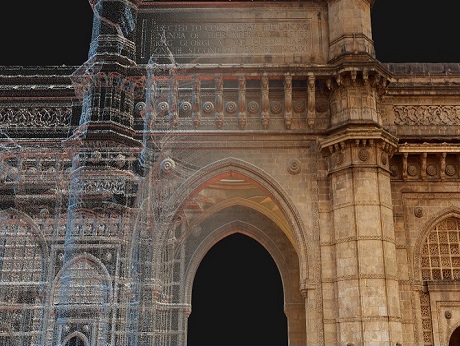
Mumbai, April 3 2019: World leader in data storage solutions – Seagate Technology -- has joined with with international non-profit organization CyArk to digitally preserve the Gateway of India, a historic arch monument in Mumbai. Digital scanning and archiving of the arch monument commenced in February 2019, with data and images from the field exercise being turned into photo-real 3D models for future generations of students, tourists and cultural heritage enthusiasts to experience the site virtually anytime and anywhere.
The Gateway of India was selected by CyArk as part of their international programme for digital preservation through aerial surveys conducted with drones, terrestrial laser scanning known as LiDAR, and photogrammetry exercises. CyArk will provide 3D models and architectural drawings, which will be used as a baseline to monitor the monument’s surface for any future changes in its condition
“The proposed project of the 3D scanning of the iconic Gateway of India is truly beneficial for creating an easily accessible digital database of the monument, ensuring its enhanced protection and the formulation of comprehensive conservation policies,” said Dr. Tejas Garge, director, Directorate of Archaeology and Museums, Government of Maharashtra.
“Heritage sites are a significant part of humanity’s collective memory, but many of them are at risk from the ravages of time. This year, we are excited to continue our partnership with CyArk and participate in this significant journey of cultural preservation in India,” said Robert Yang, vice president of Asia Pacific sales at Seagate Technology. “We believe in the value data can bring both to the present and the future, which is why we have worked together since 2015 to digitally preserve some of the world’s most unique and historically significant locations. Our commitment is to provide the best data storage solutions to CyArk so they can securely store and protect the data they collect throughout a project, from capturing and processing to archiving, further enabling all sorts of new possibilities for future generations.”
Seagate is supporting CyArk both in the field and the office with its data storage solutions such as the LaCie® Rugged® Thunderbolt USB-C SSD, DJI Copilot, 2big Dock Thunderbolt 3, and Seagate’s Nytro SSD, BarraCuda® Pro 10TB, as well as other high capacity, high performance drives. These devices ensure that the massive 3D capture data files from the field are safely backed up, centralised, and ready for processing to create detailed maps and architectural drawings that aid in the conservation of heritage sites. The stored data is also used to share the monument through exciting, interactive virtual reality experiences for citizens, residents, tourists and academics alike while helping to preserve the design and architecture of the monument.
“We are grateful for Seagate’s support to complete our first project together in India. The Gateway of India is one of the most iconic landmarks in Mumbai and our digital documentation work will provide site managers with the tools they need to ensure the longevity of this incredible place,” said CyArk CEO John Ristevski.
Originally built to commemorate the visit of King George V and Queen Mary to the city in 1911, the Gateway of India was a symbol of the British Empire in India. Completed in 1924, it has since borne witness to almost a century of development in Mumbai, from its location immediately adjacent to the five-star Taj Mahal Palace Hotel, the first building in the country to receive intellectual property rights protection for its architectural design. The monument is now a reminder of the city’s rich colonial history as Bombay, and is the unofficial icon of the city.
Since 2003, CyArk has amassed high-tech digital records of over 200 heritage sites in 40 countries, including the Tu Duc Tomb and An Dinh Palace in the Complex of Hue Monuments in Vietnam, the Wat Phra Si San Phet in Thailand, Angkor Wat in Cambodia, Bagan in Myanmar and the Sydney Opera House in Australia.